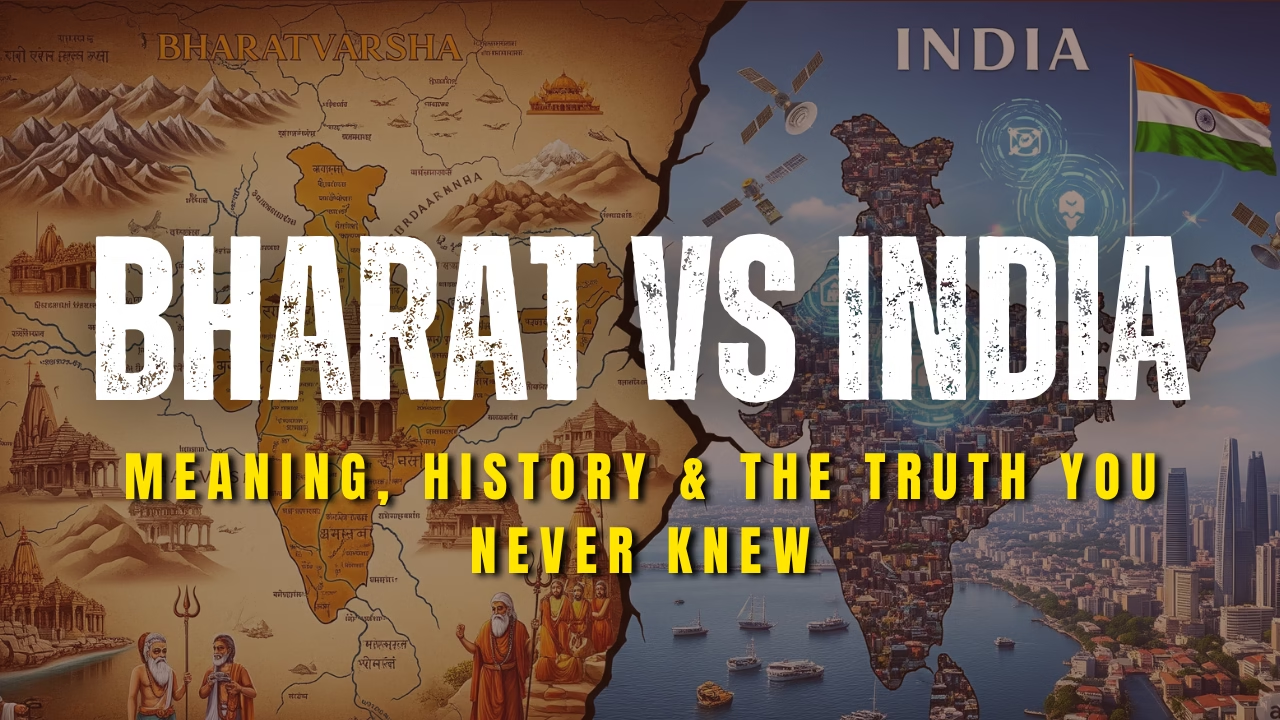When you hear the word India, you likely imagine a modern democracy, rich in culture, colour, and contradictions. But when someone says “Bharat,” it evokes something deeper — an ancient civilization, an eternal idea, and a soul that predates borders and colonization.
In daily life, both names are used interchangeably. But they’re not the same. While India is a relatively recent geopolitical name with colonial associations, Bharat is an indigenous term with roots in Vedic and Puranic antiquity.
So why does one country have two names? And what do they truly mean?
This blog dives into the historical, cultural, and civilizational truths behind India and Bharat — truths that most history books never taught you.
Table of Contents
What Does Bharat Mean?
Before India was ever called India, it was known to its own people as Bharat — not just a name, but a living legacy. The origin of the word Bharat dates back thousands of years, rooted in mythology, memory, and meaning.
According to ancient Indian texts, the name Bharat comes from King Bharata, a legendary emperor mentioned in the Mahabharata and the Puranas. He was the son of King Dushyanta and Shakuntala, and a ruler known for his wisdom, valour, and sense of justice.
But what truly sets Bharata apart in ancient lore is this:
He was one of the few kings who refused to pass his throne to his own sons, choosing instead the most capable successor — a rare act of meritocracy over lineage.
As a result, the land he ruled — one that extended far beyond today’s national borders — came to be known as Bharatavarsha, or “The realm of Bharata.”
But there’s more. Sanskrit scholars often point out that “Bharat” is composed of two root words:
- “Bha” – meaning light, brilliance, knowledge
- “Rata” – meaning devoted or engaged in
So Bharat can also mean: “The land devoted to knowledge and enlightenment.”
This isn’t just poetic — it’s consistent with how the land of Bharat nurtured philosophies like Yoga, Vedanta, Ayurveda, and Sanatana Dharma for thousands of years.
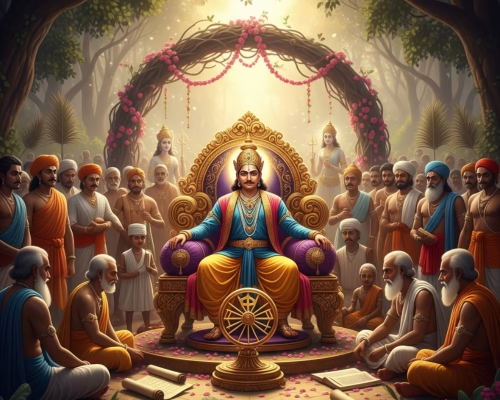
Where Did “India” Come From?
Unlike the name Bharat, which finds its roots in Indian scriptures and stories, the word India is an import — a name given from the outside, and popularized during foreign rule.
The name “India” traces its origin to the Indus River, one of the oldest cradles of civilization. In Sanskrit, it was called Sindhu. But here’s where the shift began:
- Persians, who could not pronounce the “S” sound easily, called it Hindu.
- The Greeks then took this term and turned it into Indos.
- The Romans further Latinized it into India.
So, the name India evolved through mispronunciation and transliteration by outsiders — not from within.
While Bharat is a name that speaks of cultural continuity, India became a convenient colonial shorthand for administration and cartography.
Under British rule, India became the dominant official name. It was used in treaties, laws, and stamps — and by the time independence came, the name had become deeply embedded in international discourse.
But here’s what’s crucial:
In 1950, the Constitution of India deliberately chose to acknowledge both legacies —
“India, that is Bharat, shall be a Union of States.”
This single line says it all. One name speaks of geopolitical identity, the other of civilizational memory.
“India was the name the world gave us. Bharat was the name we gave ourselves.”
Mentions of Bharat in Ancient Texts
Long before colonial maps were drawn and global treaties signed, the name Bharat was already etched into sacred scriptures and epics of India. Far from being a poetic term or nationalist slogan, Bharat is a name that appears across Vedas, Puranas, and Itihasas — texts composed over 3,000 years ago.
Let’s explore some of the most significant and direct mentions:
1. Vishnu Purana (Book 2, Chapter 3, Verse 1)
“उत्तरं यत् समुद्रस्य हिमाद्रेश्चैव दक्षिणम्,
वर्षं तद् भारतं नाम भारती यत्र सन्ततिः।”“Uttaram yat samudrasya himadreshchaiva dakshinam,
varsham tad Bharatam nama Bharati yatra santatih.“(“The country that lies north of the ocean and south of the snowy mountains is called Bharatam; there dwell the descendants of Bharata.”)
This is one of the clearest geographical references to Bharatavarsha, showing its location between the Indian Ocean and the Himalayas — the same land we today call India.
2. Mahabharata (Sabha Parva, Chapter 14, Verse 64)
इमं भारतवर्षं त्वं पृथिव्यां पूर्वमुत्तमम्।
भोगानां चैव सर्वेषां पृथिवीनां च शोभनम्॥“Imaṃ bhārata varṣaṃ tvaṃ pr̥thivyāṃ pūrvam uttamam,
bhogānām caiva sarveṣāṃ pṛthivīnāṃ ca śobhanam.”“This land known as Bharatavarsha is the most distinguished part of the Earth; it is adorned with all enjoyments and beauties of the world.”
The Mahabharata — which literally means The Great Tale of the Bharatas — ties the identity of the land directly to King Bharata and his lineage.
3. Rigveda (Mandala 3, Hymn 53, Verse 12)
त्रितः कृण्वन् भरतः शर्म सप्त
स्वधितिः शंसं चर्षणीनाम्।“Tritaḥ kṛṇvan bharataḥ śarma sapta
svadhitiḥ śaṃsaṃ carṣaṇīnām.”“Trita, aided by Bharata, constructed a shelter for the people; he wielded seven types of weapons and spread joy among tribes.”
While not a reference to the modern nation, this is among the earliest mentions of the Bharata clan, dating to ~1500 BCE, making Bharat one of the oldest continuously remembered civilizational names in the world.
4. Manusmriti (Chapter 2, Verse 21)
एतद्देश प्रसूतस्य सकाशादग्रजन्मनः।
स्वं स्वं चरित्रं शिक्षेरन् पृथिव्यां सर्वमानवाः॥
भारतमेतद्वर्षम्॥“Etad deśa prasūtasyā sakāśādagrajanmanaḥ, svam svam charitram śikṣeran pr̥thivyāṃ sarvamānavāḥ. Bhāratam etad varṣaṃ.”
“All human beings on Earth should learn their duties from the traditions that originated in this land — this land is called Bharatavarsha.”
This presents Bharat not just as geography but as the source of universal dharma, offering moral guidance to humanity.
In these texts, Bharat isn’t just geography — it’s described as a karmabhoomi (land of righteous action), unlike other lands considered bhogabhoomi (land of pleasure).
“It is only in Bharat that one can pursue moksha (liberation),” writes the Vishnu Purana — emphasizing Bharat as a spiritual realm, not just political space.
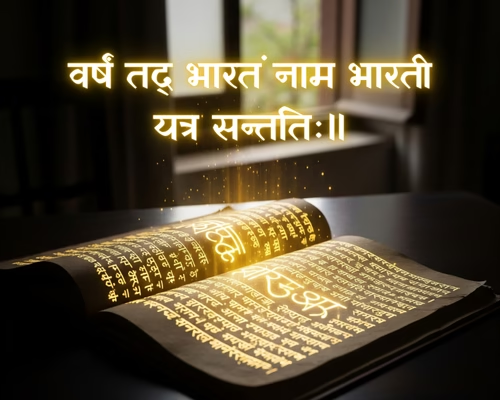
Colonial Shadows: How ‘India’ Was Imposed
The name India, while globally recognized today, is rooted in a colonial lens — a term that emerged not from within, but from outside. Its rise as our dominant name traces back to foreign perspectives, specifically Persian, Greek, and later British influences.
Historically, the word “India” was derived from the River Sindhu (modern-day Indus). The Persians pronounced ‘Sindhu’ as ‘Hindu’ due to phonetic shifts, and the Greeks rendered it as Indos. The Romans followed, calling the region India. It was not how the people of the land described themselves — it was how outsiders categorized them.
But it was under British rule that India was institutionalized.
“The name ‘India’ was not our choice. It was the result of colonizers naming us through their lens of geography and dominion.” — Indian historian Ramachandra Guha
The British administration used the term “British India” officially, and through laws, treaties, and administrative divisions, cemented this identity. The term served their political aims — to portray the subcontinent as one unified block under imperial rule, ignoring its cultural diversity and civilizational continuity.
This renaming wasn’t merely semantic. It was part of a larger erasure of indigenous identity — of calling ancient texts “myths,” portraying temples as exotic, and reducing Bharat to a subject of the Crown.
The Constitution Speaks — “India, That Is Bharat”
The most pivotal moment for this debate lies in the very first article of the Constitution of India, adopted in 1950. It reads:
“India, that is Bharat, shall be a Union of States.” — Article 1(1), Constitution of India
This is not just a line — it is a civilizational bridge.
The framers of the Constitution were deeply aware of the significance of both names. In the Constituent Assembly Debates, some argued that Bharat represented India’s cultural essence, while others noted that India was internationally recognized and useful for diplomacy and treaties.
Yet, instead of choosing one over the other, the Constitution declared both names as legally and politically valid — acknowledging that “Bharat” is not a different entity from India, but its original identity.
“It is only proper that the country be called ‘Bharat’, which is its ancient name and is in every Indian language.”
— H.V. Kamath, Member of the Constituent Assembly
“Let us make no mistake: ‘India’ is the name recognized by the world, but ‘Bharat’ is the soul that sustains it.”
— K.M. Munshi, Constitutional Advisor
This duality is not confusion — it is plurality. It respects India’s ancient soul and modern structure. But this phrasing also opens the door for debate: which name should we give primacy in identity, culture, and international forums?
Modern-Day Debates — Why the Name Still Matters
The phrase “India, that is Bharat”, written over 70 years ago, continues to ignite passionate debates in Parliament, social media, academic circles, and even pop culture. But why?
Because names are not just labels — they are symbols of sovereignty, heritage, and self-perception.
In recent years, the debate has intensified:
- In 2023, an official G20 dinner invite referred to the President as “President of Bharat” — sparking nationwide curiosity, applause, and some criticism.
- Proposals have been floated in Parliament to amend Article 1 and drop “India” altogether, citing the need to shed colonial baggage.
- Political narratives are increasingly framing “India” as a construct of British colonizers, and “Bharat” as the indigenous, rooted name that should be embraced nationally and globally.
But not everyone agrees.
Critics argue that “India” is already established in the global imagination — from diplomacy to economics, changing it could be impractical and costly.
Supporters counter that “Bharat” evokes unity, pride, and civilizational continuity in a way that “India” cannot.
Even Supreme Court PILs (Public Interest Litigations) have been filed to replace “India” with “Bharat” in official documents — although most have been dismissed with the note that both terms are already constitutional.
“Changing the name to ‘Bharat’ is not just about renaming the country, but about reclaiming our identity.”
— Swami Ramdev, 2023
“We are known as India across global forums, treaties, and markets. To tamper with this recognition is unwise.”
— Shashi Tharoor, MP
Thus, the Bharat vs India debate is not merely political — it’s deeply philosophical.
It’s about whether we wish to continue with a post-colonial identity or return to our civilizational ethos.
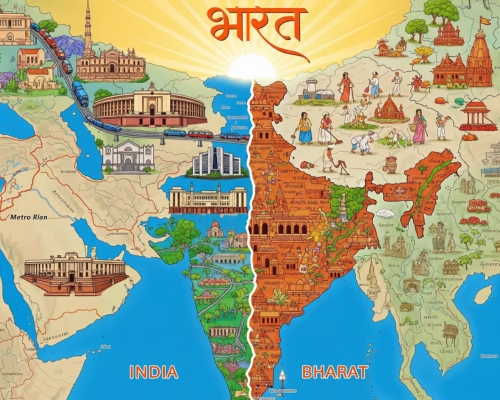
The Cultural Identity Crisis — Can We Be Both?
India stands at a peculiar crossroads — one where its ancient soul as Bharat and its modern face as India often seem to tug in opposite directions. This inner tension isn’t just political or linguistic; it is deeply cultural, psychological, and philosophical.
The name Bharat invokes ideas of spiritual rootedness, collective identity, and civilizational continuity. It doesn’t just refer to a nation; it reflects a dharmic way of life, deeply embedded in local traditions, languages, rituals, and community values.
- A Bharatwasi identifies with the soil — whether through festivals like Onam in Kerala, Lohri in Punjab, or the Ganga Aarti in Varanasi.
- Here, the village well is as sacred as the Vedas, and the temple bell echoes longer than the smartphone ping.
“To be Bharatiya is to belong — not just to a state but to a sacred ecosystem of memory, culture, and continuity.”
On the other hand, India is a post-colonial, post-industrial vision — one of ambition, globalization, and economic ascent.
- In India, the focus is on urban growth, technological innovation, and individual achievement.
- English replaces Sanskrit, malls replace mandis, and yoga becomes a fitness trend more than a spiritual practice.
There’s a deepening disconnect between the “India” we build and the “Bharat” we inherited.
So, Can We Be Both?
Yes — but only if we stop seeing them as mutually exclusive.
Instead of choosing, India must become the vehicle for Bharat to express itself in modern terms. A software engineer can write code and still do Surya Namaskar. A filmmaker can tell urban stories while invoking epics like the Mahabharata. A policymaker can drive GDP growth while preserving tribal knowledge systems.
“Bharat is the soul. India is the skin. When they align, we become whole.”
The real crisis is not that we are becoming more like India — it’s that we are forgetting how to remember Bharat.

Suggested: “Kamakhya Temple & the Feminine Divine” — Shows the sacred feminine worldview that modern India often overlooks.
Bharat Awakens — A Whisper Becoming a Roar
For too long, Bharat has been spoken of in hushed tones — as nostalgia, as folklore, as a relic of the past. But now, the whisper is rising. Across villages and cities, in the hearts of youth and the chants of elders, Bharat is not just remembered — it is reawakening.
The Rise of Conscious Identity
- Young Indians are returning to Sanskrit mantras and Vedic maths.
- Startups are building Ayurveda apps.
- Homemakers are rediscovering millet wisdom while CEOs chant ‘Om’ before board meetings.
This isn’t regression. It’s integration.
“Bharat does not rise in rebellion against India. It rises through India.”
Beyond Politics: A Civilizational Revival
This movement isn’t driven by elections or manifestos. It is a quiet revolution — in what we eat, what we worship, what we read, and how we define ourselves.
It’s when we ask:
- “Why don’t our textbooks mention Rishi Kanada’s atomic theory?”
- “Why do we feel more pride quoting Shakespeare than Kalidasa?”
- “Why does the name Bharat make us feel ‘less modern’?”
These questions are not rebellion — they are remembrance.
“We are not choosing between Bharat and India — we are choosing to remember who we were before the forgetting began.”
Final Call: Your Identity is Your Legacy
You are not just a citizen of a republic. You are a descendent of a civilization.
The choice today isn’t about East vs West or Bharat vs India. It’s about whether we will let the world rename us into forgetfulness, or whether we will reclaim our names, our stories, our truths — and wear them like armor.
“The lotus grows from the mud. Bharat rises from memory.”
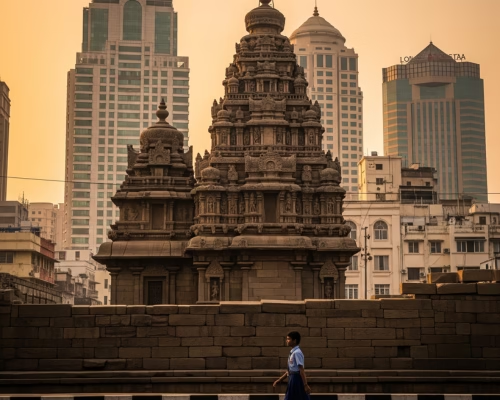
Discover more forgotten echoes and untold truths — only at Whispers of Bharat.
FAQs – Frequently Asked Questions
1. Why is India also called Bharat?
India is called Bharat because of ancient historical references in sacred texts like the Vishnu Purana and Mahabharata. The term “Bharat” refers to the legendary emperor Bharata and symbolizes a cultural and spiritual identity rooted in indigenous traditions.
2. What is the difference between India and Bharat?
“Bharat” is the indigenous name mentioned in ancient scriptures and used in many Indian languages, while “India” is derived from the Indus River and popularized during colonial times. Bharat reflects cultural continuity; India denotes geopolitical recognition.
3. Where is ‘Bharat’ mentioned in ancient texts?
The name ‘Bharat’ appears in texts like:
Vishnu Purana: “Uttaram yat samudrasya himadreschaiva dakshinam, varsham tad bharatam nama bharati yatra santatih.”
Mahabharata: As the land of King Bharata’s descendants.
These validate the deep civilizational roots of the term.
4. Is Bharat the official name of India?
Yes, Article 1 of the Indian Constitution states: “India, that is Bharat, shall be a Union of States.” Both names are official, and the Constitution treats them interchangeably.
5. Can we use both ‘India’ and ‘Bharat’ legally and socially?
Absolutely. Both names are valid and recognized officially. You can use ‘Bharat’ in formal, cultural, and vernacular contexts, while ‘India’ is used globally in diplomatic and international affairs.
6. Is there a movement to rename India as Bharat?
Yes, several political and cultural groups advocate using ‘Bharat’ exclusively to reclaim indigenous identity and move away from colonial-era nomenclature. However, both names currently coexist in official use.
